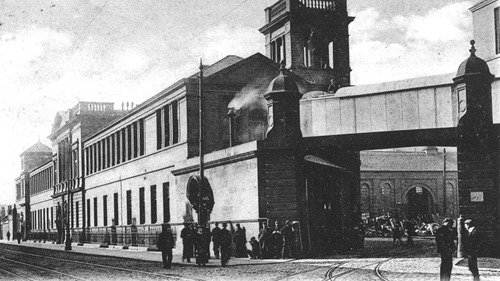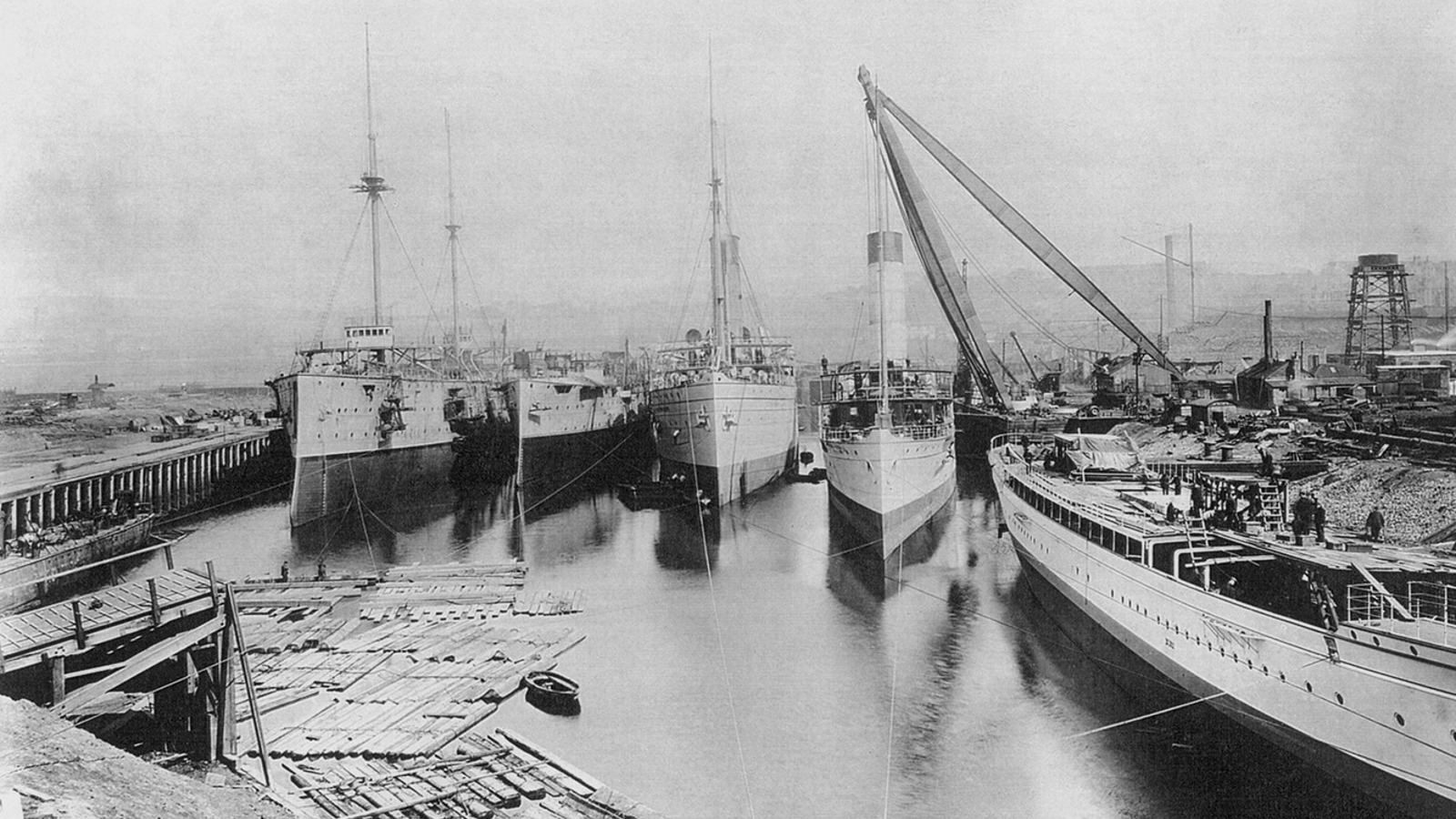Fairfields - Times Past

In partnership with the Glasgow Times, our archivists are exploring Glasgow's fascinating history. This week, Nerys Tunnicliffe writes about the Fairfield Shipbuilding and Engineering Company.
In 1864, on the site of a former Govan farm called Fairfield, a shipyard was established that eventually would dominate shipbuilding in Glasgow, employing thousands in the city. Often simply referred to as Fairfields after the farmland, the firm manufactured some of the biggest naval and passenger ships in the world.
We’re fortunate to hold a large collection of the shipyard’s records including many photographs and ship plans (some of them many metres long!) such as the local paddle steamer Jeanie Deans and the HMS Norfolk (which had eight guns and carried a seaplane launched from a catapult).
Fairfields built ships for famous shipping lines such as the Anchor Line, Donaldson Line, Canadian Pacific Line and Orient Line, as well as for travel agent Thomas Cook and even a Russian Tsar.
Originally the Govan yard was operated by Randolph, Elder and Co, a partnership between Charles Randolph and John Elder who both had previous links with the Robert Napier shipyard. John Elder developed a revolutionary compound engine that allowed for greater fuel efficiency and therefore longer voyages at sea, contributing to the partnership’s success. Diversifying into shipbuilding, by 1868 Randolph retired and the firm was now called John Elder and Co. However, Elder died not long after. His wife Isabella took over the firm temporarily until other partners, including Sir William Pearce, bought the firm in 1869. They kept the John Elder name until 1886 when on becoming a limited company a new name was chosen: Fairfield Shipbuilding and Engineering Company.
Under Sir Pearce’s direction the firm’s success grew and expanded. Pearce was determined to build the fastest transatlantic vessels and Fairfield ships won the Blue Riband repeatedly, including the Cunard Line vessels RMS Campania and RMS Lucania in the 1890’s. The firm also built luxurious turbine engine yachts like the Narcissus in 1904 (which at time cost around £100,000) as well as more experimental designs like the steam yacht Livadia for Tsar Alexander II (an unfortunate failure as it was unstable at sea).
During the First and Second World Wars the company was a major producer of warships from battlecruisers such as the HMS Valiant, aircraft carriers such as HMS Implacable, to submarines. Its workforce was recognised as providing an essential service to the war effort throughout both conflicts.
After the Second World War production slowed, but Fairfields looked to modernise and rejuvenate, reorganising the shipyard in an ambitious £4 million programme. New construction techniques meant ships could now be built much like a factory assembly line, with large sections welded together.
However, faced with a declining demand for ships and competition from abroad, the heyday of shipbuilding on the Clyde was over. Fairfields underwent several transformations, including a merger with other yards such as John Browns and Charles Connell to form Upper Clyde Shipbuilders in 1968 which ended with a well-publicised strike and work-in in 1971. Eventually the yard and remains of the company were sold and are now part of BAE Systems Surface Ships.

